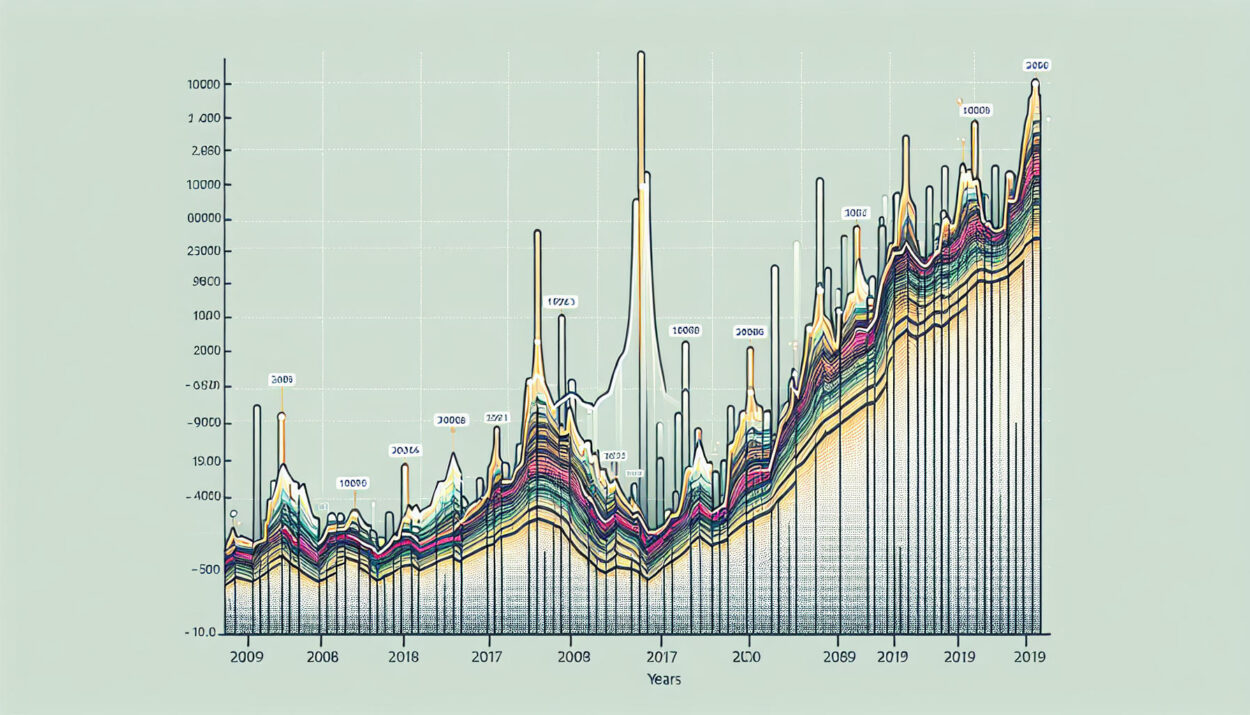Since its inception, Bitcoin has shown annual price declines in only four out of 14 years. This demonstrates the overall growth trend and long-term utility of Bitcoin (BTC) as an asset class. With BTC reaching its all-time high of $72,000 today, the leading cryptocurrency has seen a yearly increase of over 260%. However, this is not the only instance of significant yearly gains for BTC.
Since its initial trading in March 2010, BTC has only experienced annual declines in 2015, 2019, 2022, and 2023. This consistency in growth has led to profitable returns for investors who have entered the Bitcoin market at any point in time. It’s important to note that past performance does not guarantee future results. With the upcoming halving event just 41 days away, a supply shock is expected due to increased demand and reduced supply, setting the stage for unprecedented momentum.
“Every investor who has ever entered the Bitcoin market is currently enjoying profitable returns, as the current price far surpasses any historical point. However, it’s imperative to remember that past performance does not guarantee future results. With the halving event looming just 41 days away, we anticipate a forthcoming supply shock amid escalating demand. This delicate balance between reduced supply and heightened interest sets the stage for unprecedented momentum.” – Sumit Gupta, Co-founder of CoinDCX
On the other hand, the USD has faced a consistent annual inflation rate, leading to a gradual decline in purchasing power over time. The inflation rate has fluctuated, with periods of higher inflation, especially during the early 2020s due to economic challenges such as the impact of the COVID-19 pandemic and subsequent recovery efforts. This inflation reduces the value of money over time, resulting in a dollar in 2009 having less purchasing power in 2024.
Since Bitcoin’s introduction through Satoshi Nakamoto’s whitepaper, there have been no reported years of deflation indicating an increase in purchasing power. This contrasts with the USD’s decreasing purchasing power due to inflation every year for the past 14 years.
The significant difference between Bitcoin’s exponential growth and the USD’s decreasing purchasing power due to inflation highlights the fundamental disparities between a decentralized cryptocurrency and a fiat currency. Bitcoin’s rise signifies its increasing acceptance and the speculative interest it garners, sparking debates about its role as an inflation hedge.
Meanwhile, the inflation rate affecting the USD underscores the impact of centralized economic policies, supply chain dynamics, and global events on traditional currencies.
For more news and updates on cryptocurrencies and finance, explore Global Crypto News.























